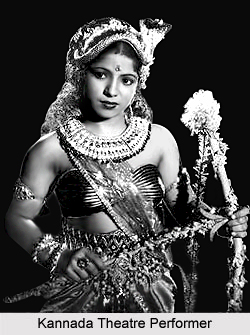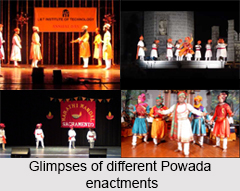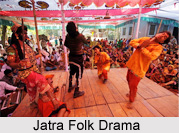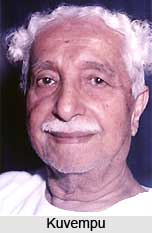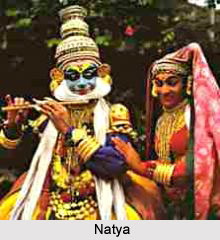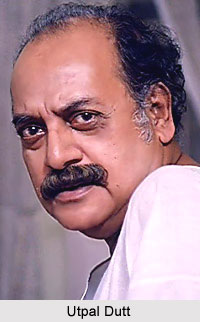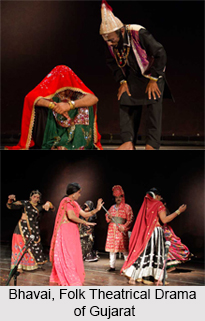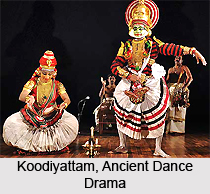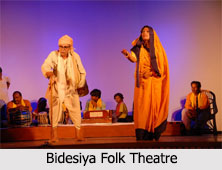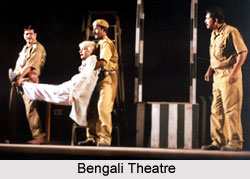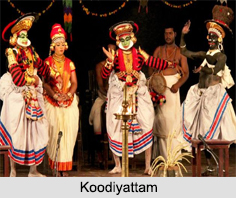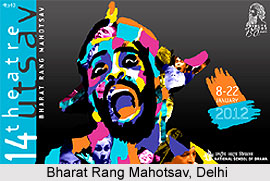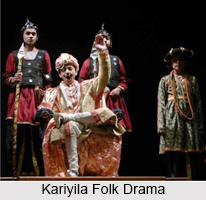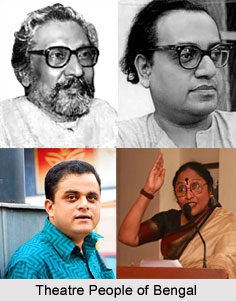In the absence of internal or external evidence, it is difficult to determine the precise antiquity of folk theatre in Sindh. Only those forms can be dated that existed in the eighteenth century and those about the beginnings of which some acceptable evidence can be get.
The first performatory style that can be found in Sindh is Chheja. This is a group dance with sticks and music, akin to Gujarati Dandia. It goes back to the twelfth century when the originators apparently toured villages urging people to fight for their rights. In time, the purpose changed and Chheja is now associated with the Sindhi New Year, weddings, and festivals. Another old form is practiced since at least the sixteenth century. This is known as Lorau, meaning desert performance. The eastern part of Sindh is desert, where the mode of transport was and still is a camel. Even in western Sindh no other means of communication was available during those times. The cameleers performed Lorau on camelback, carrying their passengers in caravans. Lorau involved reciting dohiro, a Sindhi verse medium, following the storylines of familiar folk legends.
Galihyun, or tales with ballads, comprise the oldest form of Sindhi theatre, dating to the fourteenth century, if not earlier. Munaziro or Jhero, and Bhagati, date from the eighteenth century at the latest. While Hindus participated in Sanga, Muslims patronized Tamasho. Eight folk romances of Sindh i.e. the stories of Koel and Dipak, Sorath and Rai Dyach, Mumal and Rano, Lila and Chanesar, Nuri and Jam Tamachi, Umar and Marui, Suhini and Mehar, Sasui and Punhu gave birth to a formidable oral literature. This is done especially during the medieval period. These tales form the core of the folk theatre performed by the bhagats, bhatts, and charans, minstrel bards, in the village streets of Sindh.
The tradition of folk drama continued in the modern period. Khanchand Daryani`s Mumal-Mendhro i.e. `Mumal and Mendhro` in 1922 was staged by Sindh College, Karachi, in 1928. Urnar-Marui was written by Lalchand Amardinomal Jagtiani. This was produced in 1925 by Rabindranath Literary and Dramatic Club in Hyderabad (Sindh). A play based on the Suhini-Mehar story, composed by Dingomal Thadhani in 1926, was never performed. Others inspired by folklore included Mangal Singh Ramchandani`s Sasui-Punhu was staged by College Students Dramatic Club, Karachi. Lilaram Pherwani`s Hikri rat i.e. `One Night` in 1936, Ram Panjwani`s Mumal-Rano in 1941 and Pakhe mein Padmini i.e. `Padmini in a Hut` in 1943. Nanikram Mirchandani wrote his Sohini-Mehar in 1946, but it did not appear on stage. Panjwani came out with capsule versions of seven popular tales in 1952. all of these were appeared in Bombay theatres and had repeat performances elsewhere.
Some critics believe that Haji Imam Bux `Khadim` composed the first original Sindhi drama namely Hira-Ranjho i.e. `Hira and Ranjho` in 1879. Others raise doubts about its date. Therefore, Mirza Qalich Beg`s Laila-Majnu i.e. `Laila and Majnu` in 1880 is acknowledged as the first modern Sindhi play. 1980 was celebrated as the centenary year of Sindhi drama in India and Pakistan. Qalich Beg, who wrote thirty-six plays, is acclaimed as the father of Sindhi drama. The first staged work was his Gul Bakavali i.e. `Bakavali`s Flower` in 1894. This was translated from one of the hits of the Parsi and Gujarati theatre companies that had started visiting Sindh to perform their mythological productions. Indeed, up to the 1930s, Sindhi drama seemed to be under the impact of Parsi theatre, at least from the technical point of view, if not thematically.
Several dramatic societies were responsible for the growth and development of modern drama in Sindh. D. J. Sindh College Amateur Dramatic Society, founded in 1894, brought on stage Lilaramsingh Lalwani, Qalich Beg, and other dramatists. In its twenty-year existence, it performed and published fifteen plays. During this period, Sindhi writers were afflicted by theatre fever and many other societies mushroomed in various parts of Sindh. The Dharam Upkar Amateur Dramatic Society was established in 1897 in Shikarpur. Thakurdas Nagrani was its main writer and founder who also composed the music. The first play produced by this society was Gangaramsingh Atmasingh`s Shakuntla-Dushyanta or `Shakuntala and Dushyanta`. This was published in 1898. During its life of eighteen years, it staged over twenty works, the last being Gagansingh`s Dr Shyam Narain in 1915.
Qalich Beg`s Khurshidwas the first script presented by the Hyderabad Pleaders Club, which did not remain actively involved in production but still put on a few popular plays. The Chandika Amateur Dramatic Society was founded in 1907 in Larkana by the well-known poet Kishinchand Tirthdas Khatri `Bevas`. This premiered all of Bevas`s plays. The first, Khubsurat bald i.e. `Beautiful Trouble` was adapted Agha Hashr`s drama of the same title. Shakajo shikar or `Victim of Doubt` was the last, staged in 1931. Seven of Bevas`s socially relevant one-act scripts were collected in Indalathi or `Rainbow` in 1931.
With the establishment of the Hyderabad Amateur Dramatic Society in 1912, the change in theme of Sindhi drama became evident. The society`s mainstay, Nanikram Mirchandani, introduced social realism. It staged his first play, Farebifitno i.e. `Deceitful Brawl` in 1914. This was followed by many socially aware works, including four by the eminent Khanchand Daryani, closing down after his Insan kina shaitan. In 1917 Chandumal Khatri founded the Saraswat Brahmin Dramatic Society, which produced his plays Manohar rnohini i.e. `Attractive Enchantress` in 1917, Vahimi vikar or `Whimsical Disease` in 1918, and Nala-Damayanti or `Nala and Damayanti` in 1919 consecutively. It presented Harumal Premchand`s Naval Lakshmi. Daryani started the Detileti or dowry Committee in 1920 to bring before audiences a drama of social consciousness. His first play on dowry, Gulaba jogid or `Rose Flower` appeared the same year. Motieji mukhri or `Jasmine Bud` was based on the conflict between mother-in-law and daughter-in-law. Detileti Committee produced a number of well-received works. Another important dramatic club, Young Citizen Society, established in 1920 by Lilaram Tharumal Makhijani. This also presented mostly social drama. Makhijani wrote all their scripts.
Yet another renowned group that gave a boost to the development of Sindhi drama, specially the one-act variety, was the Rabindranath Literary and Dramatic Club, established in Hyderabad by Daryani and the equally famous Mangharam Malkani in 1923. It staged only drama of social reform and sixteen full-length and a few short plays in eight years. Realism in Sindhi theatre peaked with its productions. The Hyderabad National College Dramatic Society was founded in 1924. It chose Qalich Beg`s Mohini for its debut, followed by Bhagsingh Advanis Gumanighamsan or `Doubtful Furore` in 1925. Other plays included Tejumal Shahani`s Ratio Pratapsingh in 1926 and Motumal Gidwani`s Vasant-Lakshmi in 1927.
Malkani became known as the father of Sindhi one-act drama and for his charged sexual themes. A few years before Independence, Usman Deeplai emerged as a worthy successor, but did not fulfill his early promise. One-act drama of this period was original rather than adapted, rooted in the soil, with identifiable characters, and dealing with local problems. In 1939, Muhammad Ismail Ursani`s slightly lengthy Badnasib Thari or `Unfortunate Tharis` created ripples. It depicted how a poor Thari i.e. resident of the Thar Desert suffered at the hands of corrupt officials. Written in Thari dialect, its staging went down well with Tharis. Most full-length plays, however, were tragedies that moved the highly emotional spectators to tears. As an antidote, directors presented rib-tickling short farces after the main drama ended in order to send the audience home in good cheer. Moreover, farce came in handy to expose the evils in society. During the 1940s, Jethanand Nagrani introduced the fast-moving slick comedy in a series of Gamtu plays, like Gamtu doctor or `Quack Doctor`.
In the beginning, the duration of performances used to be five to six hours, reduced to four hours by the Rabindranath Literary and Dramatic Club. It further cut to three hours later. Up to 1920 sets did not exist in Sindhi theatre, nor was there any permanent stage. Tables would be joined together for a platform and scenes would be changed with the help of bedsheets used as curtains and backdrops. Wings and regular curtains with painted visuals came into existence on stage only after 1920.
Sindhi theatre reached its loftiest heights during the period 1920-47. It suffered a temporary setback after Independence, when Sindhi Hindus migrated to various parts of India, mainly concentrating in Maharashtra, Gujarat, Rajasthan, Delhi, Uttar Pradesh, and Madhya Pradesh. Their final rehabilitation in these areas took them several years, followed by a struggle for economic stability. However, social organizations came up almost everywhere to keep alive their language and culture. Despite many odds, Sindhi dramatists and artists made efforts to revitalize the stage at all places where Sindhis had settled in sizeable numbers. The Sindhi theatre found its reincarnation in India under the patronage of the Sindhi Sahit Mandal founded by Malkani in Bombay. This was the first Sindhi literary society in India, which started its activities in the 1950s. The first of its nine productions was Bevas`s Podhe jo parno i.e. `Old Man`s Wedding`. This was staged simultaneously in Bombay and Delhi in 1952. Two notable playwrights responsible for reviving Sindhi theatre in India were Das Talib and Gobind Malhi. Both of them joined the Indian People`s Theatre Association (IPTA). While Malhi came back to Sindhi theatre, Talib preferred to move on to the Hindi stage.
Ram Panjwani had already used the compound of Jai Hind College, Bombay, as a stage in 1949. Over the next twenty years, the college produced eight full-length plays, seventeen one-act plays, and two operas titled Rai Dyach and Umar-Marui. Ram Raseela presented shows for the Sindh Model High School, which has produced over fifty plays. The most important aspect of this was the life of refugees in the camps, depicted for the first time.
In 1953, Harumal Rajpal established the Sindhu Natak Mandal, which brought on stage twenty-one plays. Progressive authors founded the Sindhi Kalakar Mandal in 1958, supported by eminent artists in the field like Geeta Raj, Madan Jumani, Bhagwanti Navani, Ramesh Janjani, and Anand Matai. They produced twenty-five plays, all written and directed by Gobind Malhi. The Lok Sar Mandli surfaced in 1960, presenting nine shadow plays and three operas written and directed by Mohan Chhabra. Sindhu Kala Mandir was established in the same year by Moti Prakash, Bhudo Advani, and S. P. Menghani. This renewed the tradition of long dramatic works. Their first venture was Under Secretary, directed by Advani. The group still exists, and has so far produced twenty-one full-length and many more one-act plays. Sindhu Art Theatre was launched in 1966 by Ramesh Janjani. This has done over twenty full-scale productions. Although Janjani himself wrote many one-act scripts collected in Nirrnan or `Creation` and Samarpan or `Surrender`. They have not been staged. Other notable contributors to drama include Vasdev Nirmal, Madan Jumani, Arjan Mirchandani, Moti Prakash, and Popati Hiranandani. By 1965, Sindhi theatre was in full swing in Bombay and was of some excellence.
The Delhi College Sindhi Sahitya Sabha came into existence in 1950, under the patronage of H. I. Sadarangani. Till 1952 it had staged eight plays directed by the well-known Jivan Gursahani. The Jor Baugh Sindhi School put on Bevas`s Podhe jo parno in 1952 and went on to produce over fifty plays, all directed by Lekhraj Hans. Among many groups that present theatre regularly, one outstanding organization is Sindhu Kala Sangam. This was co-founded by Gursahani and the great performer Hemraj Nagwani. Established in 1961, it has produced nearly thirty one-act plays of the highest standard, winning popular accolades as well as critical acclaim throughout India. Another notable Delhi group, Mehran, founded by writer-director Gopal Panjwani in 1975 has also contributed to Sindhi theatre with nearly twenty productions.
In 1952, the Garbe Group initiated Sindhi theatre in Ahmadabad, Gujarat with a few humorous plays. Afterwards, many dramatic societies surfaced but ebbed away owing to fading enthusiasm or lack of funds. The Sindhu Kalakar Mandal started by Gordhan Tanwani in 1962 had the support of many patrons, but closed after about twenty productions. The Sindhi Drama Workshop is the main club for Ahmadabad Sindhis involved in theatre. It emerged in 1974 through the hard and elaborate efforts of Prem Prakash. He was a leading dramatist-director. Its activities include around fifty stage improvisations, many subsequently dramatized and published.
Prakash has so far written thirty experimental plays like the absurdist Picnic in 1974 and Morchabandi i.e. `Barricade` in 1979. He has always posed a challenge to actors because of the limited possibilities of action and the burden of an entire philosophy. Hence Picnic has not yet been performed. The main characters are in a kind of torpor, too weary to talk, too tired to move. Prakash distils the quintessential ennui of our times. He focuses on small, insignificant things, making the point that ordinary people are helplessly unable to influence events. The plot forms the backbone, as hard-edged as a cartoon strip and as plausible as tomorrow`s headlines. Morchabandi is a political satire in which the author combines a dilution of the complicated infrastructure of the `new drama` with the all-popular phenomenon of speed, making the artwork an excellent achievement.
By one count, over 500 Sindhi plays have been staged in India since Independence. Many of them were by various theatre groups in Vadodara, Adipur (Kachchh, Gujarat), Ajmer, Jaipur, Bhopal, Nagpur, Agra, Lucknow, Calcutta, and other towns, for local Sindhi audiences. Annual drama competitions are held under the auspices of the Sindhi Boli and Sahit Sabha in cities where Sindhis live. The first took place at Calcutta in 1973. Ten to twelve organizations from different places in India always participate in this sabha. Sindhi theatre is still in fine form at the three main centres of theatrical activities. The productions occur at regular intervals in Mumbai, Delhi, and Ahmadabad.







